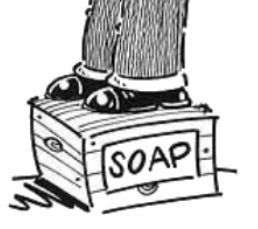1: Introduction
“ Everything should be made as simple as possible, but not simpler ”
I probably violated the "But Not Simpler" part, but I tried to include enough Hyperlinks to make amends. Clicking on them should allow any interested diver to "drill-down" as far as curiosity takes them. I also have faith that replies from the ScubaBoard community will keep me from disappointing Dr. Einstein.
What is Decompression?
In diving physiology, decompression occurs when the ambient pressure is reduced causing body tissues to release dissolved gas; like when a diver ascends. This dissolved gas is the key concept that divers need to understand.Normally, all of our tissues are fully equalized (saturated) with Nitrogen at the altitude (pressure) where we live. This phenomenon matters to divers because changing the ambient pressure changes the gas equilibrium in tissues. Tissues will absorb more Nitrogen (ingas) when pressure increases and release it (outgas) when pressure decreases. The ingassing part is fairly benign; it is outgassing that causes all the problems.
Divers often refer to gasses that can dissolve in tissues as diluent. Diluent is one or more biologically inert gasses used to dilute Oxygen in breathing mixtures; typically Nitrogen and Helium. For example, Nitrogen is the major diluent gas in air comprising about 78%. Oxygen metabolizes in the body so doesn't materially contribute to excessive outgassing during ascent.
An important but less dramatic force acting on tissue saturation is the Partial Pressure of Oxygen (PPO2). Increasing Oxygen reduces diluent absorption and accelerates transfer from the blood stream into the lungs.
For perspective, it is worth noting that diluent outgassing occurs in all of these scenarios:
- Natural drops in Barometric Pressure (too small to impact decompression calculations)
- Hospital patients wearing an Oxygen cannula tube
- Driving up a mountain side
- Ascending in an aircraft*
- Recreational divers ascending (whether decompression stops were required or not)
- Saturation divers returning to the bell after a deeper lockout/excursion
Different Rates
OK, that's not too complicated. The perplexing parts begin with the fact that different tissues, from blood to bone, ingas and outgas at different rates. It gets even more challenging because different diluent gasses also ingas and outgas at different rates. That is one reason that Trimix* dive computers cost more.
* Trimix is a breathing mixture of Oxygen, Nitrogen, and Helium that is typically used on dives deeper that recreational limits to minimize Nitrogen Narcosis.
It is very common for slower tissues to still be ingassing during a decompression stop while faster tissues are outgassing. It all has to be calculated to limit bubble formation to prevent blocking your bloodstream. You might be asking yourself about now: Why not just breathe pure Oxygen and avoid the whole diluent and decompression mess? You could, but going below about 20'/6M will cause Oxygen Toxicity, which can be much worse.
Residual Nitrogen (or Diluent)
Another complicating factor is that all decompression procedures are designed for you to safely return to the surface, but with higher tissue saturation (super-saturation) than before you started diving. The US Navy Diving Manual refers to this as "Residual Nitrogen", though it applies to all diluents. It basically shifts the starting point for calculating the next dive.
Fortunately, divers don’t need to do the math or sort out all the convoluted interactions; over 100 years of hyperbaric research figured that out for us. However, that doesn’t mean that blindly following your computer is your best strategy. There are a number of more minor factors that influences decompression, which are discussed in Post #3.
Vague on DCS? (DeCompression Sickness)
Divers that haven’t been trained in decompression procedures might be a little unsure what DCS really is; other than they don't want it. To confuse matters even more, it goes by several different names:
- DCS (DeCompression Sickness)
- DCI (DeCompression Illness) which includes AGE (Arterial Gas Embolism)
- The Bends, from the name of a popular dance when the Brooklyn Bridge was under construction, the Grecian Bend.
- Caissons Disease, because Caisson workers or Sandhogs also suffered DCS
- Divers' Disease
- Divers' Condition
- Diver's Palsy
- Decompression Disease
- Compressed Air Illness
- Dysbaric Illness
- Tunnel Disease
“ Ask a new diver what causes DCS and he'll say he doesn't know. Ask an instructor on ScubaBoard and he'll go on for days about micro bubbles, M-values, tissue stress, etc. Ask a research scientist who has studied DCS at Duke for many years and he'll say he doesn't know. ”
Contents
- Decompression & Treatment Simplified (this post)
- Visualizing Decompression
- What exactly is DCS?
- DCS Treatment
- DCS Diagnosis
- Recognizing DCS Symptoms
- Type I DCS
- Type II DCS
- OK, I might be bent
- Soapbox
- DCS Treatment History
- Still Too Simple?
Click on the "Share this thread" icon to copy the link to any post and paste into your post:
The link will "unfurl" like this:
FAQ - Unfurled links in ScubaBoard posts
Unfurled links in ScubaBoard posts This is one of my favorite new features in ScubaBoard 2021. Unfurling simplifies including links to other posts in ScubaBoard or any publicly accessible site on the Web. What is an unfurled link? Here is one inside ScubaBoard...
Continued in the next post






